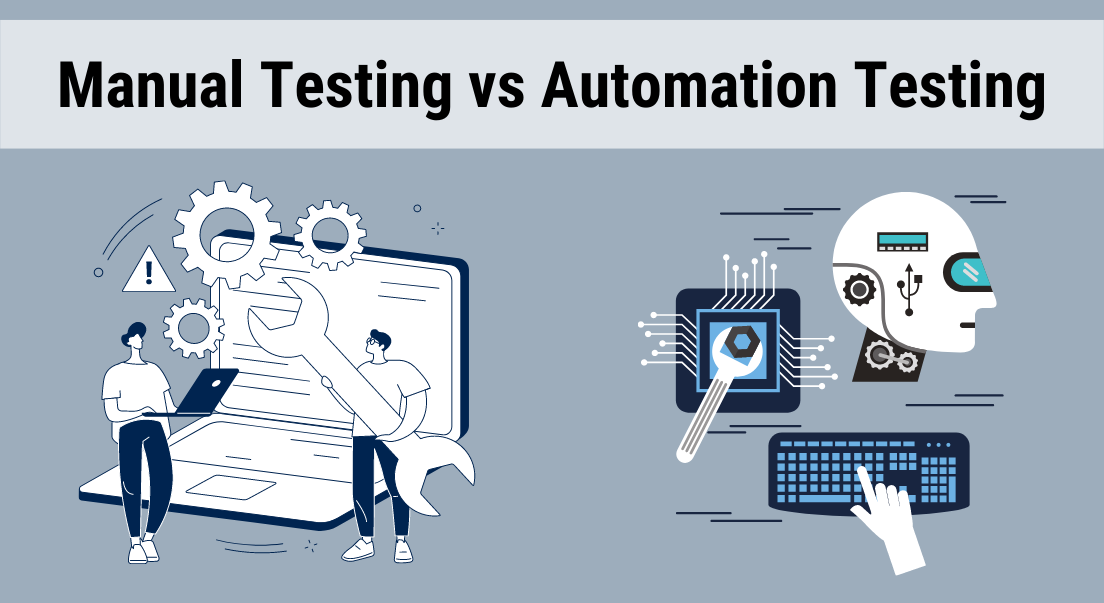Ensuring Success in Automation Checking: Key Metrics, Difficulties, and Solutions Every QA Group Ought To Know
In the world of software quality control, the landscape of automation testing is ever-evolving, requiring a precise technique to ensure seamless procedures. Trick metrics function as the compass leading QA teams with the substantial terrain of test automation, clarifying progress and areas for improvement. Nonetheless, challenges loom big, usually casting shadows on the course to success. By recognizing these hurdles and applying reliable services, QA teams can navigate with intricacies with finesse. The journey to grasping automation screening is paved with nuances that need a keen eye for tracking, evaluation, and constant improvement. automation testing. As the sector moves forward, the mission for ideal performance in automation testing remains a continuous quest, advising QA groups to outfit themselves with the expertise and strategies important for victory.
Importance of Trick Metrics
Comprehending the significance of key metrics is crucial for examining the performance and effectiveness of automation screening processes. Key metrics work as quantifiable actions that give important insights right into various facets of the testing procedure, such as test coverage, examination execution time, defect density, and examination situation efficiency. By examining these metrics, QA teams can identify traffic jams, inefficiencies, and locations for improvement within their automation testing structure.
One important element of key metrics is their capability to track progress and keep an eye on the total health and wellness of the screening process (automation testing). They make it possible for stakeholders to make educated decisions based upon data-driven understandings, which can bring about extra effective screening techniques and far better resource allowance. In addition, key metrics can help teams set sensible objectives, measure the success of automation efforts, and show the ROI of automation testing efforts

Common Obstacles Encountered
Difficulties generally experienced in automation testing procedures can substantially influence the overall effectiveness and effectiveness of QA teams. Automation testing might not cover all facets of screening, such as usability and user experience screening, which still need manual treatment. Getting over these obstacles needs correct planning, tactical examination case choice, durable upkeep processes, adequate sources, and a clear understanding of the constraints of automation testing.
Effective Solutions for Challenges
To deal with the obstacles encountered in automation screening, applying reliable services is necessary for enhancing the performance and efficiency of QA groups. One essential service is to spend in robust training programs for QA groups to guarantee they have the required abilities to successfully make use of automation tools. Training can link expertise spaces, improve understanding of automation structures, and improve scripting capabilities, eventually resulting in extra effective test development and execution.
An additional important remedy is to develop clear interaction channels within the QA team and with various other stakeholders, such as designers and project supervisors. Effective interaction assists in aligning assumptions, sharing progression Related Site updates, and immediately addressing concerns or roadblocks that might arise throughout the automation screening process.

Surveillance and Evaluation Methods
Carrying out effective tracking and evaluation techniques is critical for guaranteeing the success and performance of automation testing processes. In addition, evaluating examination results and metrics provides useful understandings into the high quality of the software program being tested and the efficiency of the screening strategy.
One secret technique in monitoring and analysis is making use of dashboards that consolidate appropriate metrics and KPIs in an aesthetically obtainable style. These control panels offer a detailed review of examination execution status, test protection, defect patterns, and various other critical information. On a regular basis reviewing and evaluating these dashboards can assist QA groups make educated decisions, prioritize tasks, and optimize testing efforts.
In addition, carrying out automated signals and great post to read notifications based on predefined thresholds can enhance proactive monitoring and timely treatment. By establishing signals for efficiency discrepancies or test failings, groups can deal with issues quickly and prevent them from intensifying. On the whole, tracking and analysis methods play a vital function in making certain the effectiveness and success of automation testing campaigns.
Continual Renovation Methods
Enhancing the effectiveness of automation testing processes demands the regular refinement of techniques and methods. Constant improvement approaches are essential for QA teams to adjust to progressing innovations and provide premium software. One crucial approach to boosting automation testing procedures is to conduct normal evaluations and retrospectives. By analyzing previous testing cycles, groups can identify traffic jams, ineffectiveness, and areas for improvement. Carrying out feedback loopholes and incorporating lessons discovered into future screening frameworks can produce considerable improvements with time.

Verdict
To conclude, it is important for QA teams to recognize the essential metrics, obstacles, and solutions in automation screening to guarantee success. By carefully keeping track of and analyzing information, executing reliable services to usual challenges, and continually enhancing strategies, QA teams can maximize their testing procedures and deliver top notch software products. Complying with these techniques will ultimately lead to a lot more efficient and reliable automation testing practices.
By evaluating these metrics, QA teams can determine bottlenecks, inadequacies, and locations for improvement within their automation screening structure.
In addition, essential metrics can help groups established practical goals, gauge the success of automation efforts, and demonstrate the ROI of automation screening initiatives.
Challenges commonly come across in automation screening procedures can substantially influence the general effectiveness and effectiveness of QA teams. Automation testing may not cover all elements of testing, such as usability and user experience screening, which still require manual treatment.In conclusion, it is vital for QA teams to comprehend the crucial metrics, difficulties, and options in automation testing to ensure success.